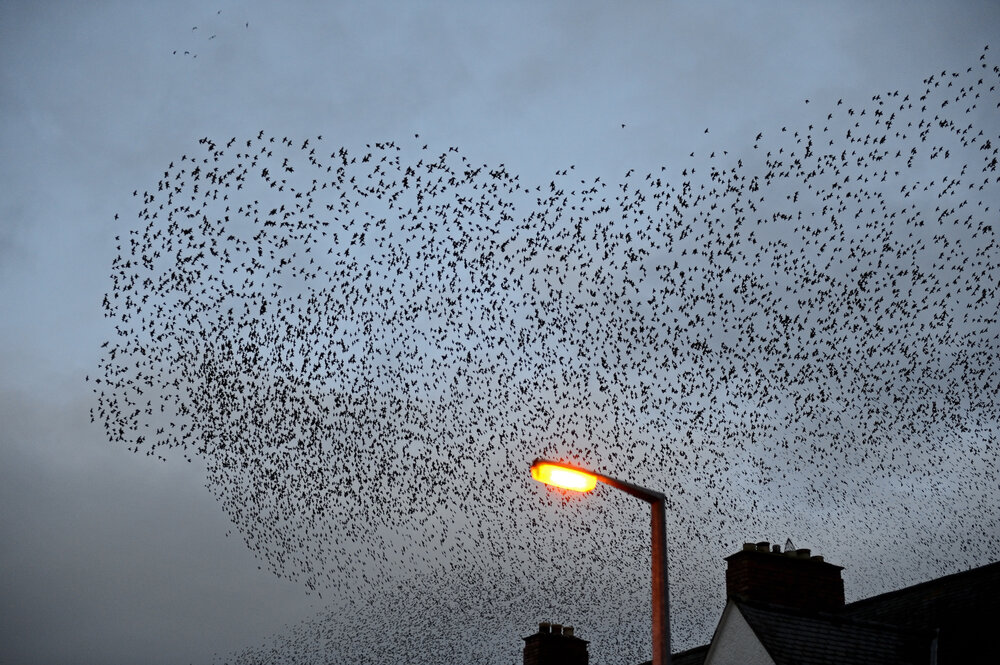Dim the lights for birds at night

TEHRAN – Iran celebrates World Migratory Birds Day 2022 under the slogan “dim the lights for birds at night.”
World Migratory Bird Day, which is celebrated on both the second Saturday in May (14th) and October (8th), celebrates the migration of birds across countries and continents. This year, the campaign will be focusing on the issue of light pollution and the negative effects it is having on migratory birds.
Artificial light is increasing globally by at least 2 percent per year and it is known to adversely affect many bird species. Light pollution is a significant threat to migratory birds, causing disorientation when they fly at night, leading to collisions with buildings, perturbing their internal clocks, or interfering with their ability to undertake long-distance migrations.
A wide range of wetlands is the reason behind migratory birds choosing Iran for an annual wintering habitat. Solutions to light pollution are readily available. For instance, more and more cities in the world are taking measures to dim building lights during migration phases in spring and autumn. Best practice guidelines are also being developed under the Convention on Migratory Species to address this growing issue and ensure that action is taken globally to help birds migrate safely.
In an ideal situation, people would just turn out their lights completely, but there are some safety concerns with turning out your lights at night, people feel a little bit safer with lights on. If you need to leave your lights on for security reasons you can cover the windows with thick curtains.
Iran hosting species of migratory birds
Some 1,998,615 birds out of 156 migratory waterfowl and shorebirds migrated to Iran in January-February 2021, Reza Faraji, the head of wildlife conservation and management office of the Department of Environment, has said.
Statistics were collected from 491 bases across the country, he added.
The annual census for migratory birds in Iran begins in the middle of the Iranian calendar month of Dey (December 22-January 20) and ends in the middle of the month of Bahman (January 21-February 19), through which Iran hosts rare species of migratory birds heading from north to the southern countries due to reduced seasonal temperatures and food availability.
About 61,493 migratory birds were among the IUCN Red List, including Dalmatian pelican, lesser white-fronted goose, red-breasted goose, common pochard, marbled duck, white-headed duck, Siberian crane, and great knot, which were observed in various parts of the country.
The largest population of migratory birds on the IUCN Red List belonged to the common pochard species with a population of 53,882 and the lowest population belonged to the two species of Siberian crane (one) and the red-breasted goose (two), he explained.
Mazandaran, Golestan, and Gilan provinces hosted the largest population of migratory waterfowl and shorebirds in the winter of the [Iranian calendar year] 1399 (January-March 2021), he stated.
Every year, with the participation of about 15,000 forces, many of whom are volunteers, migratory waterfowl and shorebirds are counted in more than 100 countries.
Iran’s bird species
Hosting over 600 species of birds, Iran is a climatically rich country, so it is said that the number of bird species in Iran is higher than in the whole of Europe. A wide range of wetlands is the reason behind migratory birds choosing Iran for an annual wintering habitat, as a large number of birds fly a thousand miles each year to benefit from this rich climate.
Every year, from early September to late February, Iran hosts rare species of migratory birds heading from north to the southern countries due to reduced seasonal temperatures and food availability.
It is estimated that there are about 50 billion birds in the world out of 9,000 species, many of which are migratory. Accordingly, about five to seven million birds migrate to Iran in different seasons. There are about 530 species of birds in Iran, 320 of which are migratory species, some of which are native species.
Among the various groups of migratory birds wintering in Iran, the largest population belongs to the group of geese, swans, and ducks amounting to 781,499 and the smallest population of seven are the long-tailed ducks or oldsquaw.
The provinces of Mazandaran and Golestan are the first provinces with the highest number of migratory birds for having sufficient resources, as the movement of migratory birds is closely linked to the seasonal availability of resources.
FB/MG
Leave a Comment